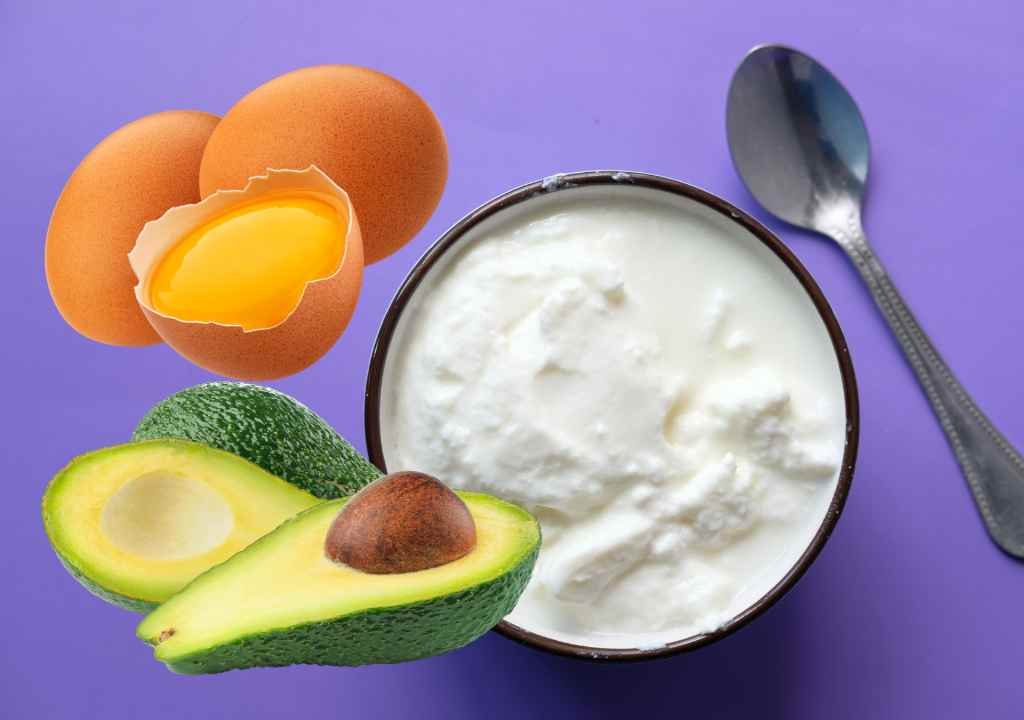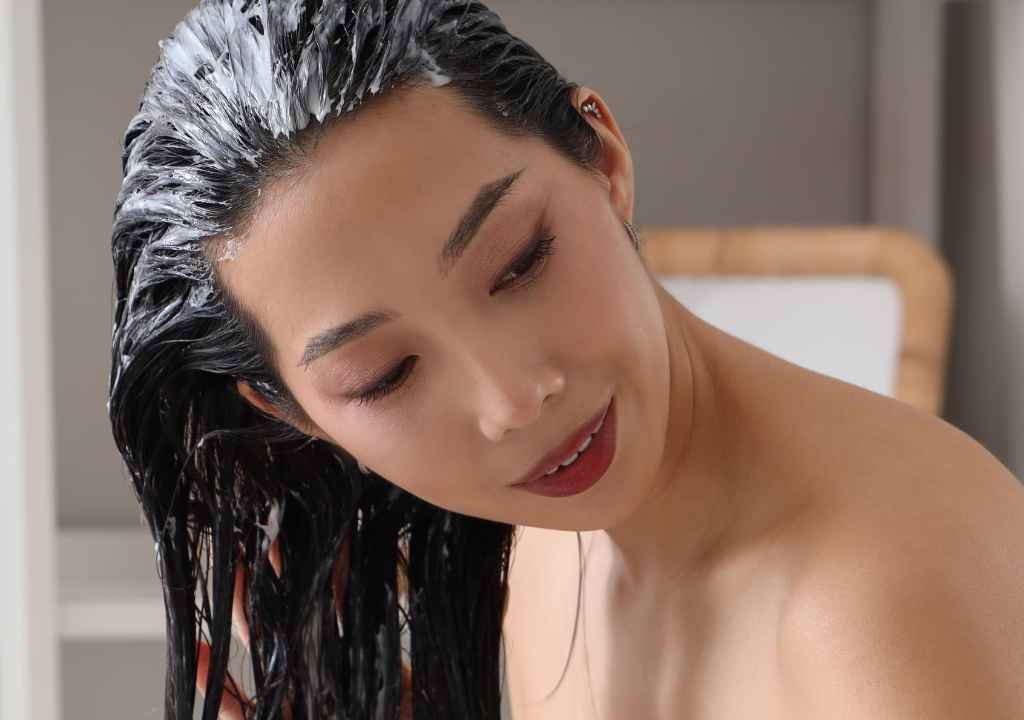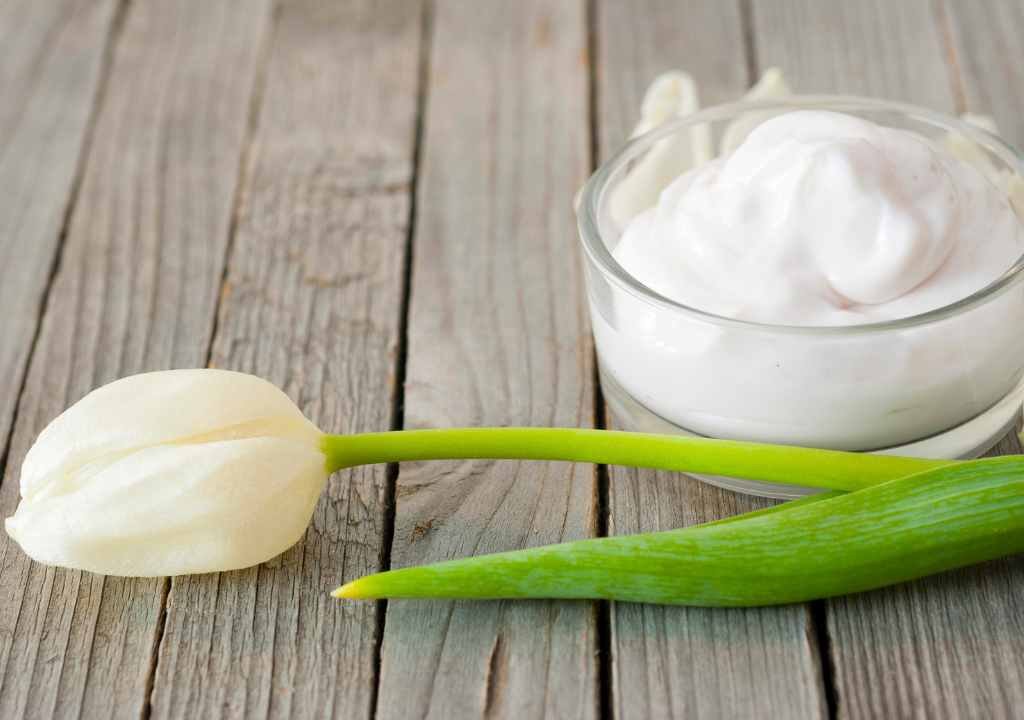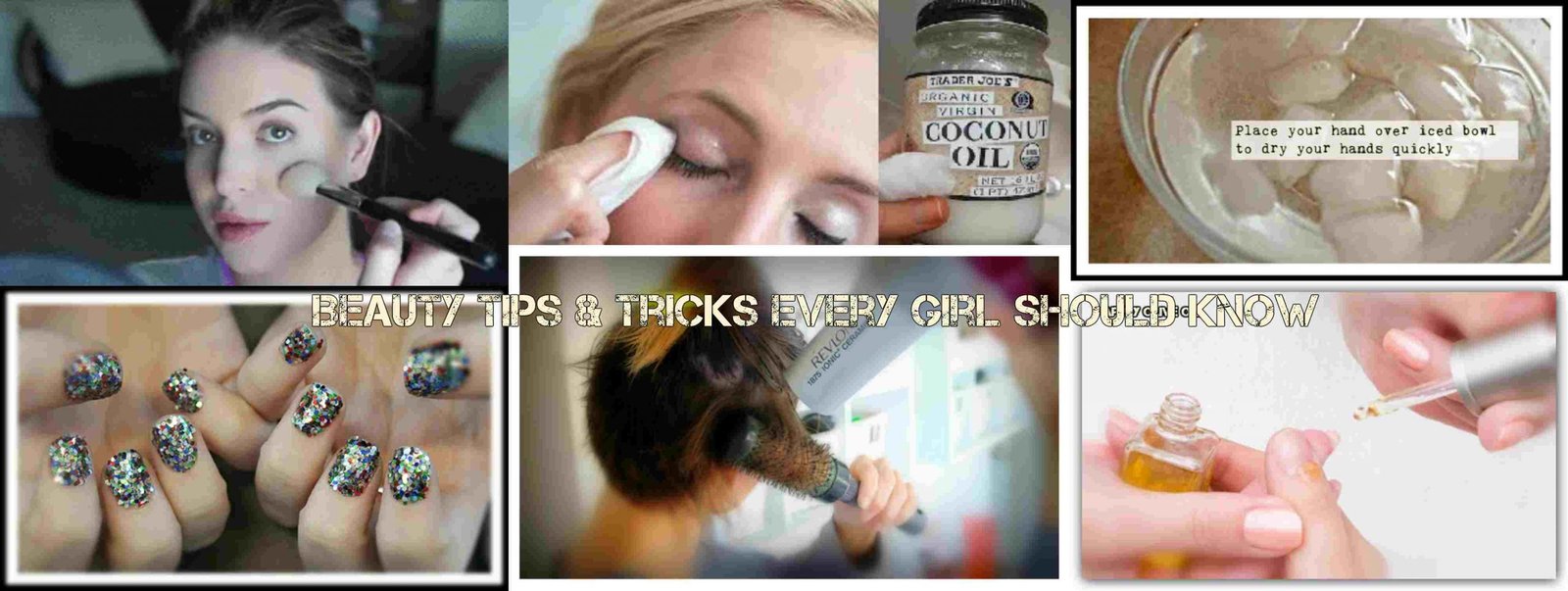Healthy-looking hair is often equated with shiny, bouncy locks; however, the foundation lies in its protein structure. “What is the best homemade protein treatment for hair?” is a common question. Protein forms the building block of your hair. It not only gives your hair strength and elasticity but also avoids breakage. Hair that has a deficiency in protein will become brittle, dry, and really prone to damage.
So, if you have been experiencing signs where your hair is limp, weak, or overbreaking, most likely you have a protein deficiency. Good thing you don’t need to spend an expensive penny at the salons to treat and repair your hair’s health. There are so many natural ingredients found in nature’s pantry that can help strengthen and nourish your locks. In this article, we will look at the signs of protein deficiency, the risks of over-proteinizing, and at home hair protein treatment for different hair types.
Understanding Your Hair’s Protein Needs
Table of Contents
Your knowledge about the specific care needed by your hair is one of the most important steps in hair care This is because protein is acquired in relatively large amounts by the hair as a component, therefore giving it the strength, elasticity, and structure that it needs. The problem, however, is balance.
The Role of Protein in Hair Health
Protein is among the basic elements essential in healthy hair. The primary protein of the hair is keratin, and it works to construct the hair strand. Here is how the protein will add to the health of your hair.
- Structural integrity: Keratin protein forms this hair shaft, and thus the hair strand will be strong with elasticity in strands. This will help make your hair less prone to breakage.
- Elasticity: The feature that makes hair stretchy and, at the same time, go back to its original shape without breaking. This is important for its protection from damage caused by styling and other environmental aggressors, such as heat and wind.
- Moisture retention: Though protein does not moisturize the hair, it is able to hold the water within the strands. This prevents the problem of dryness and brittleness, making the hair remain healthy, supple, and easy to manage.
Overall, protein contributes to maintaining strong, elastic, and moisturized hair.
How to Identify Protein Deficiency in Hair: A Comprehensive Overview

If your hair is deficient in protein, you may observe some telltale signs. Below is an overview of each symptom in-depth.
Excessive Breakage
A protein deficiency most commonly manifests in excessive breakage. It becomes brittle, snaps, and possibly breaks somewhere along a hair strand or at the ends. It can also cause split ends. All these occur because protein is a basic makeup of a hair strand. Stripped of enough protein, the hair won’t have any strength and will simply break.
Loss of Elasticity
Another characteristic symptom of protein deficiency is the loss of elasticity. It sometimes over-stretches and cannot come back to its former shape after the stretch or pull. It can become lifeless, feeling very limp with no trace of curl. Protein provides the elasticity of the hair, enabling it to stretch and recover. With the low amount of protein, the potential of the hair to recover with a bounce is lost. It becomes lifeless.
Rough and Dry Texture
This is one of the common characteristics of protein-deficient hair: it has a rough and dry texture, feels coarse, is not smooth, and easily forms tangles. Hair is generally limp. Protein is very important to the health of the hair cuticle, which protects the inner layers from loss and damage. Without adequate protein, the rough cuticle allows moisture to seep out, resulting in a dry, coarse texture.
Limp and Lifeless Hair
Hair that is limp and lifeless can be the result of insufficient protein in the body. Hair appears listless, doesn’t look voluminous, and won’t maintain a set style. Protein provides structure and body to the hair strands. Without proper levels of protein, a hair strand isn’t full and plump; it takes on a limp and lifeless appearance.
Untangling Dry Hair: Protein Deficiency vs. Moisture Imbalance
Dry hair is one of the most frequent complaints, and often the cause of the problem is mystery. While protein deficiency could be the root cause, inadequate moisture can also cause this problem. To be able to treat one’s hair in a proper manner, one really has to be able to differentiate between these two problems.
Imbalance in Moisture
Moisture is crucial for healthy hair because it makes the hair shaft elastic, thus resistant to breakage, and gives it luster. When hair lacks moisture, it becomes dry, breakable, and open to tangling. Some manifestations of this dryness include the following:
- Texture: Your hair is going to start to feel really dry and straw-like to the touch.
- Appearance: The hair will start looking really dull and lifeless.
- Elasticity: Hair has no elasticity anymore and is prone to breakage.
- Frizz: Dry hair has a tendency to get frizzier, especially under humid conditions.
Protein Deficiency:
As important as moisture is, protein is important for the structure of hair. Mainly, protein-keratin is the raw material of hair fibers. When protein levels fall, low hair usually shows the following symptoms:
- Breakage: Hair becomes weak at the roots and breaks, leading to more split ends.
- Lack of Elasticity: Proteins are responsible for giving bounce and resiliency. If there is no protein, the hair will stretch too much and will not spring back to its form.
- Rough Texture: The cuticle layer of the hair becomes rough and coarse because it lacks protein for support.
Understanding the Differences:
Here’s what you should look for, in terms of what distinguishes protein deficiency from a moisture balance:
- Hair History: Through chemical treatments like hair color, perms, or relaxants, the hair is robbed of its natural protein composition. So, if you did them recently and feel dryness, rather it will be more of a protein deficiency.
- Hair Texture: If you have fine or thin hair, it is easy to have an over-proteinized hair, which will make it quite stiff and brittle. Most likely, dryness would be the issue of over-proteinization rather than a protein deficiency.
- Response to Protein Treatments: If you do a protein treatment and your hair feels hard or brittle afterward, then it is over-proteinized. This generally means your hair likely needs more moisture than protein.
Diagnosing Your Hair’s Needs:
Sometimes, diagnosing dry hair can’t be easy to establish the main cause of the issue. You can combine the above information with a strand test for further diagnosis:
- Take a hair from your head, either wet or dry.
- Stretch it.
- Signs You’re not Getting Enough Moisture:
- The strand stretches easily and breaks readily.
- It feels rough and dry.
- Signs You’re Short of Protein:
- It barely stretches at all and snaps.
- It’s ultra mushy.
Just remember, these tests are not the final answer for anything. To get a more accurate diagnosis, see your hairstylist; she’ll know more about your hair history and actual needs.
Protein Needs for Different Hair Types
Hair of different types has different protein requirements. Understanding the character of your unique type of hair is essential in customizing your hair care.
Fine Hair
Thin or fine hair tends to be much more fragile and can be overburdened by protein. While protein does add some volume and body, it is still extremely important to place a greater emphasis on moisture to keep hair healthy and to help prevent breakage. Excessive protein leads to stiffness and brittleness. Look for mild protein treatments or look to emphasize moisture-rich products.
Thick Hair
Being that thick hair tends to demand a more intensive care, protein treatments can be done on it with ease. This treatment tends to boost the thickness, give some bulk to the hair, and create elasticity. Watch for over-proteinization, though, checking on your hair from time to time. Constant assessments keep this in check.
Curly and Coily Hair
Curly and coily hair are a balance between protein and moisture. Protein defines curls and reduces frizz. At the same time, moisture prevents dryness and breakage. Experimentation will tell you what to do to achieve the perfect balance for your hair. Some people respond to treatments that alternate between protein and moisture.
Damaged Hair
Hair that has been damaged, either by chemical treatments, heat styling, or other environmental issues, tends to lack protein. This results in weak hair, which can easily break, and generally, a weakened structure of your hair. Protein treatments can be used together with deep conditioners to give it the strength and moisture it requires. It is imperative, however, that you introduce your hair to protein treatment gradually so as not to shock it.
Color-Treated Hair
Hair coloring processes release the natural content of proteins from the hair. Consequently, it is more fragile with induced damage. Replenish your locks with gentle protein treatments formulated for color-treated hair without stripping the color of the locks. It’s very important to choose gentle and color-safe products.
Remember, these are general guidelines. Individual hair variations can influence protein needs. It is always best to hear what your hair is telling you and adjust your routine accordingly.
What is the Best Homemade Protein Treatment for Hair?

Now that you already know what your hair needs in the terms of protein, let’s find out what is the best homemade protein treatment for hair? best homemade protein treatments for hair can be easily prepared at your home with the available products to make your hair look healthy and nourished.
1- Mayonnaise Hair Mask:
Mayonnaise is bundled with proteins and fatty acids; it moisturizes and nourishes the scalp and hair. Vinegar present in Mayonnaise, balances the pH of the scalp and cleans dandruff.
Directions: Mix mayonnaise with egg yolk and few drops of your favorite essential oil. Let it sit on wet hair, applying most of the mixture on only the ends. Leave on the mask for about 30 to 60 minutes, then wash it off properly with shampoo and conditioner.
2- Egg Yolk, Almond, and Honey Hair Mask:
Honey moisturises the hair and keep the water inside hair shaft. Honey is humectant; it helps in improving hair moisturizer.
Directions: Take 1 egg yolk and beat it to well, until it becomes frothy. Add one Tbsp. of almond oil and one tsp. of honey. Allow it to sit on your damp hair for 15-20 min. Wash with normal tap water.
3- Yogurt, Egg and Fresh Cream Hair Pack
Egg and yoghurt hair mask is rich in protein, and it also serves as the source of moisturizer.
Directions: Combine 1 egg with 2 tablespoon yogurt and 1 tablespoon of fresh cream. Mix and apply on damp hair. Leave for 30-45 minutes, and wash thoroughly with tap water .
4- Coconut Milk Hair Mask
There are proteins and fats in coconut milk that help repair damaged hair.
Directions: Heat a cup of coconut milk and massage the same into your hair and scalp. Leave in for 30 minutes to 1 hour and then rinse and condition the hair.
5- Avocado-Coconut Milk Hair Mask :
Avocado contains loads of healthy fats and vitamins that further condition the hair very well from within. This hydrates hair and protects from eventual damage.
Directions: Mash one ripe avocado. Add a quarter cup of coconut milk. Apply on damp hair, let it stay for 20-30 minutes, and rinse thoroughly with shampoo and conditioner.
6- Banana and Avocado Hair Mask:
Bananas are great sources of potassium, natural oils that help to soften, and add shine to the hair.
Directions: Mash a ripe banana and a ripe avocado together. Apply to damp hair, leave on for 30 minutes, then rinse very well with shampoo and conditioner.
7- Honey and Milk Hair Mask
This mask contains honey, that aid in retaining moisture in hair. With the presence of lactic acid, an alpha-hydroxy acid, milk will act as a great exfoliating base to the scalp.
Directions: Massage into the scalp a paste of honey with an equal amount of milk while hair is wet. Let it be there for 15-20 minutes before washing properly with shampoo and conditioner.
8- Lemon and Egg Hair Mask:
The lemon juice balances the pH of the scalp, thereby lowering the level of dandruff formation. The egg white clarifies the scalp, which might clear up excess oil in the hair..
Directions: You can use the egg white by whipping it until foamy and mix the juice from half a lemon, massage into the scalp, leave for 15 to 20 minutes, then rinse with cool water.
9- Apple Cider Vinegar and Gelatin Hair Mask:
Apple cider vinegar does balance the pH of the scalp and helps in fighting dandruff or reduces its appearance. Strengthen your hair and fight breakage.
Directions: Take 1 tablespoon of gelatin with ¼ cup water and mix well. Let it combine nicely. Mix 2 tablespoons of apple cider vinegar in the gelatin solution that has dissolved well. Drop the mask on, and let it stay for about 20 to 30 minutes after lightly wetting your hair; be sure to wash it out with shampoo and conditioner.
10- Yogurt and Coconut Oil Hair Mask
This mask combines the probiotic benefit of yogurt with the hydrating properties of coconut oil to benefit hair wellness and scalp balance.
Directions: Combine yogurt and coconut oil together in equal quantities and apply to damp hair. Leave it for 15-20 minutes, then rinse off with shampoo and conditioner.
Remember, consistency is must! Just pick one of the above Protein Hair Mask and follow it consistently.
How to Apply a Homemade Protein Treatment

Applying a homemade protein treatment is pretty simple, but here are some tips which will help in increasing the purpose.
Step-by-Step Guide:
- Cleansing your Hair: Always start the treatment with clean, damp hair. It is best for the product to penetrate the strands.
- Section Your hair: Divide your hair into sections, which can be easily managed for perfect application.
- Apply the treatment: Apply from mid-length towards the ends. It should be applied more where parts of your hair feel damaged. Apply it slowly towards the top roots if you want to do so.
- Distribute well: With your fingers or a wide-tooth comb, ensure that the treatment is good in your hair.
- Cover with a shower cap or plastic wrap: this will help the ingredients penetrate deeper. You can warm it up more by using a hair dryer for about 10-15 minutes.
- Let it sit: The treatment time will vary depending on the ingredients used and your hair condition. By default, it should be applied for 30 minutes, but if nothing bothers you, you can leave it applied for up to an hour.
- Rinse well: Follow up with warm water until all the treatment comes out from your hair.
- Shampoo and condition: Gently wash the hair with a sulfate-free shampoo, then use a nice moisturizing conditioner.
Tips for Even Application
- Wear shirts to prevent clothes from getting stained
- For thicker hair, double this recipe.
- Use a hair dye applicator bottle for sectioning.
And by doing all this, you will be able to make good use of homemade protein treatments as part of your hair care—by listening to your hair.
Maintaining Hair Health
While protein treatments are necessary in the strengthening of your hair, maintaining overall healthy hair care is equally important.
Balancing Protein and Moisture
Beware of over-proteinizing; too much protein can cause dryness and brittleness. Follow up your protein treatment with deep conditioning to rebalance the moisture level. For your better understanding you can go through with Brittle Hair? When Should You Deep Condition Your Hair.
Listen to your hair. Be attuned to the condition your hair feels in right after different treatments have been applied. If your hair comes out dry or brittle from a protein treatment, then it must be time to apply a moisture-based mask.
Deep Conditioning after Protein Treatments
Keep your hair well-moisturized; a deep conditioner after every protein treatment is a must to regain lost moisture.
The Right Conditioner: This should contain humectants and emollients in sufficient quantities to moisturize your hair.
How Often to Do Protein Treatments
Do Them in Moderation First: Do one protein treatment after every 4-6 weeks to observe your hair’s response to the same.
Adjust the Frequency: In accordance with how your hair feels or looks and its needs, you may do it more frequently or less frequently.
More Tips for Great Hair
- Gentle handling: Avoid high-temperature styling tools and harsh chemicals as much as possible, including really tight hairstyles.
- Regular trims: See to it that the split ends are cut off to avoid breakage.
- Healthy diet: Consume a wide variety of food that is packed with vitamins and minerals to promote general hair health.
You can have healthy, thick, and gorgeous hair if you pair homemade protein hair treatment with a holistic approach towards hair care.
You don’t need to hassle over rehydrating your hair with protein or make it expensive. If you know a little about your hair type and its needs, you can walk hand in hand with nature, using natural ingredients to create an effective homemade protein treatment for your locks.
It’s all about that balance; the amount of protein required for the strength of the hair and the amount of moisture. Just play with different recipes, listen to your hair. Enjoy getting healthy, vibrant-looking locks.
With the right care and proper protein treatments, long, luscious, and strong locks are possible—a length, vitality, and thickness just the way you want them to be.



